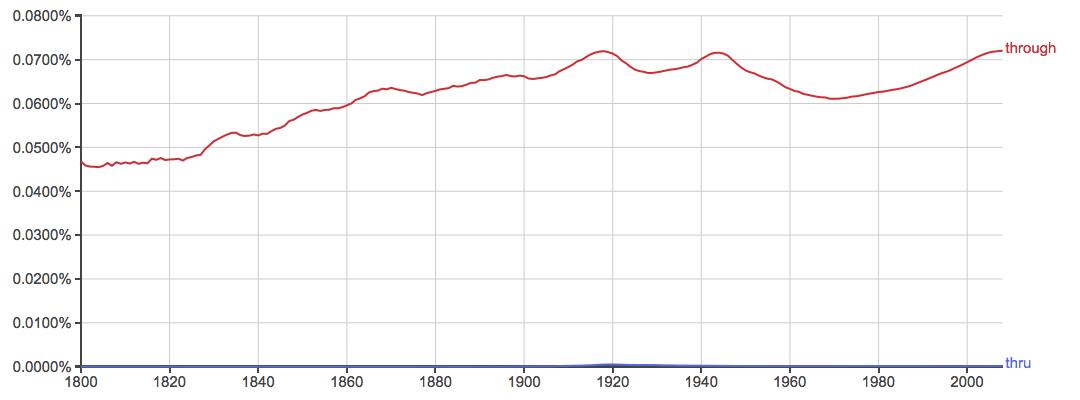The English language has a lot of confusing words that writers get hung up on. Not knowing when (or how) to use certain words can lead to embarrassing mistakes in one’s writing that are otherwise easily avoided.
Today’s two words are no different; the words thru and through confuse native and non-native English writers alike, but once you know how to use them, they’re a piece of cake.
What is the Difference Between Thru and Through?
Thru and through both have the same meanings and functions in a sentence, but they are spelled differently. They can act as a preposition, an adverb, and an adjective.
- He crawled through/thru the mud to make his way across the field. (Preposition)
- I opened the door and went through/thru. (Adverb)
- This is not a through/thru street; do not enter. (Adjective)
So, is thru or through the preferred spelling? Or is there a preference at all?
In today’s post, I will summarize the current state of thru vs. through usage.
When to Use Thru
 What does thru mean? Thru (T-H-R-U) is an occasionally used Non-standard American English spelling of the word through.
What does thru mean? Thru (T-H-R-U) is an occasionally used Non-standard American English spelling of the word through.
- Can you at least see this thru?
- Is the drive-thru still open?
- This is not a thru street; it’s a dead end.
For the most part, thru should be shunned in writing. It has no place in formal writing, but it is used occasionally in informal contexts or stylized branding.
For example, it’s more common to see restaurants advertise a “drive-thru” than a “drive-through.” You might also see traffic signs that say “no thru traffic.” And, oddly enough, the word thru does appear in the IRS Tax Code to refer to “pass-thru” entities, a certain type of corporate structure.
Other than these limited uses, through is the preferred spelling, by an astounding margin (see graph below).
When to Use Through
 What does through mean? Through (T-H-R-O-U-G-H) is the Standard English spelling of the word and is the spelling you will want to use in all formal communications, resumes, research papers, letters, etc.
What does through mean? Through (T-H-R-O-U-G-H) is the Standard English spelling of the word and is the spelling you will want to use in all formal communications, resumes, research papers, letters, etc.
Not only is this listed as the preferred spelling by usage guides like Fowler’s and Garner’s, it is favored by writers by an absolutely incredible margin.

This Google ngram charts the use of these two words in written books over the last 200 years, and, as you can see, thru barely even registers on the graph.
There is a small blip around 1920, but, aside from that, you can hardly even see the line.
With such as vast disparity in usage, it’s clear to see which is the correct choice between through vs. thru. The correct spelling is undoubtedly through.
Phrases that Use Through
A popular phrase that uses the word through is “through and through.” This means in every aspect; thoroughly or complete.
- These clothes are wet through and through.
- He was a fighter through and through.
Trick to Remember the Difference
How can you remember whether to use through or thru? Here’s a quick trick.
Through has an “O” in its spelling. Think of this “O” as standing for official. Through is the official spelling of the word.
For a discussion of threw vs. through, see here.
Summary
Both thru and through communicate the same meaning, but one is widely favored over the other.
Thru is a nonstandard spelling and should generally be avoided.
Through is the preferred spelling and is the correct choice for all formal writing.
Contents
